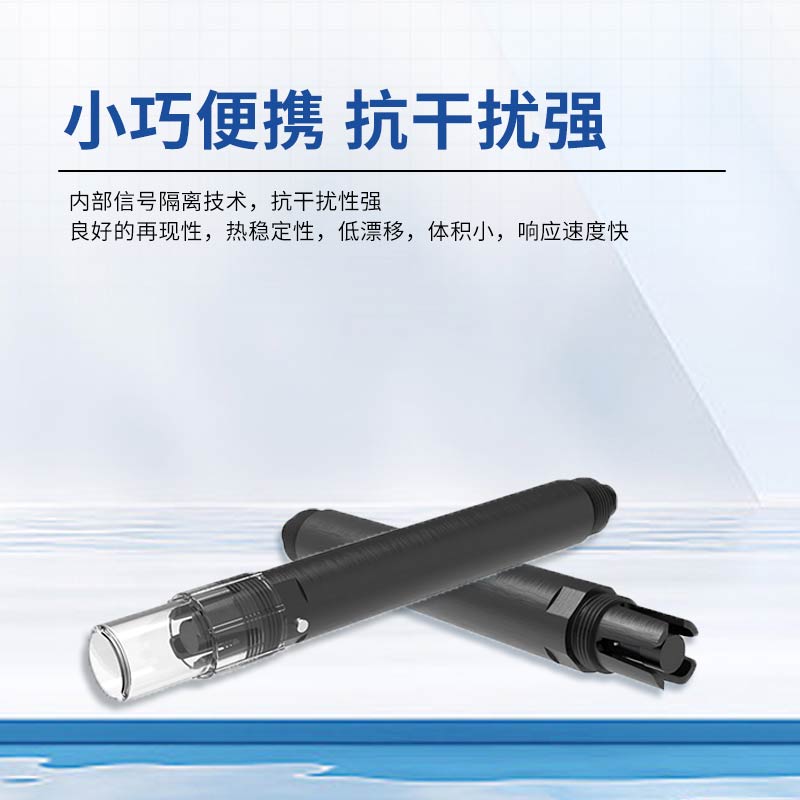Online Ammonia Nitrogen Sensor: Corrosion-resistant, Long-lasting, and Easy Maintenance.
This sensor boasts numerous advantages, including dynamic compensation for potassium ion interference, which reduces testing interference. Its internal signal conditioning function ensures more stable and accurate data signals, and parameter settings are convenient. With remote real-time data transmission capabilities, it is easy to access monitoring water body data and can connect with controllers with low power consumption. It has a wide range of applications, suitable for monitoring environmental water, lakes, streams, groundwater wells, and aquaculture, among others.
In terms of product features, the built-in pH electrode can detect water quality acidity or alkalinity and compensate for ammonia nitrogen in real-time according to pH concentration. The signal output is RS485 (MODBUS). The electrode is a composite electrode, consisting of a working electrode and a reference electrode made of polyvinyl chloride and ion-active substances, using internal signal isolation technology, strong anti-interference, fast and accurate measurement, and easy operation.
The principle of ammonia nitrogen measurement is the ion-selective electrode method, with a measurement range of 0 - 100.00mg/l, measurement accuracy of 10% of reading, ±0.5℃, and response time of 5min; the pH measurement principle is electrochemical (salt bridge), with a measurement range of 0 - 14.00 (pH), measurement accuracy of 0.01pH, ±0.01℃, and response time of about 10s in 98% flowing liquid and about 15s in 98% stationary liquid. It has temperature compensation and pH compensation algorithms. The housing material is ABS, the cable is standard 5m, the power supply voltage is 12 - 24VDC (0.4W@12V), the measurement environment temperature is 0 - 50℃ (non-freezing), pressure is < 0.2MPa, waterproof level is IP68, and the installation method is immersion installation, NPT3/4 thread.

Article address:https://www.sqqx.net/en/news/307.html

 +86 15898932201
+86 15898932201



